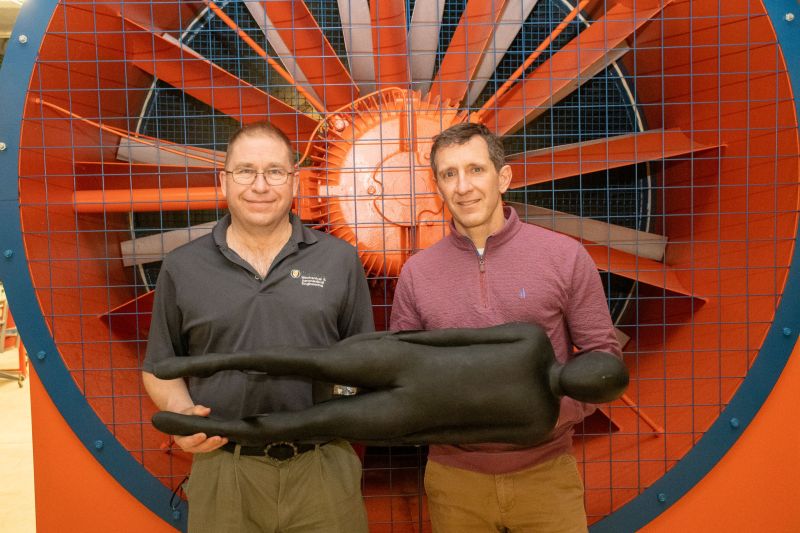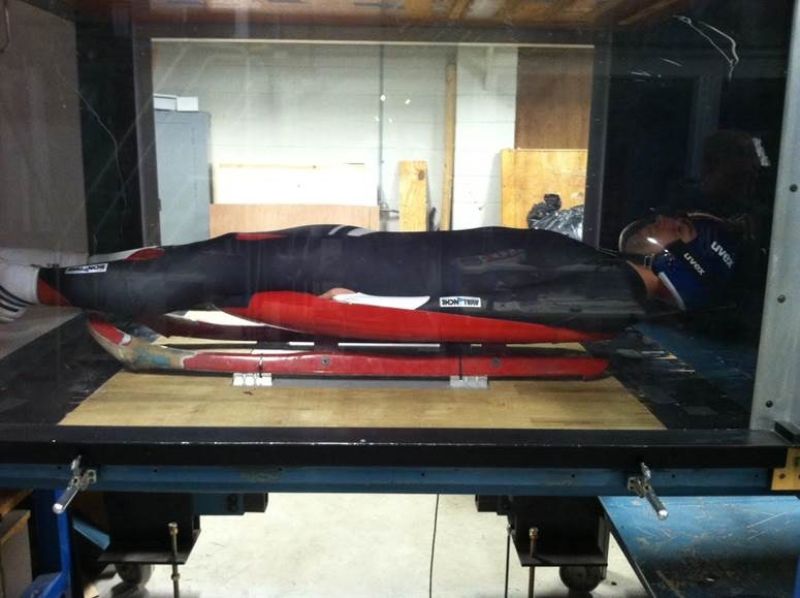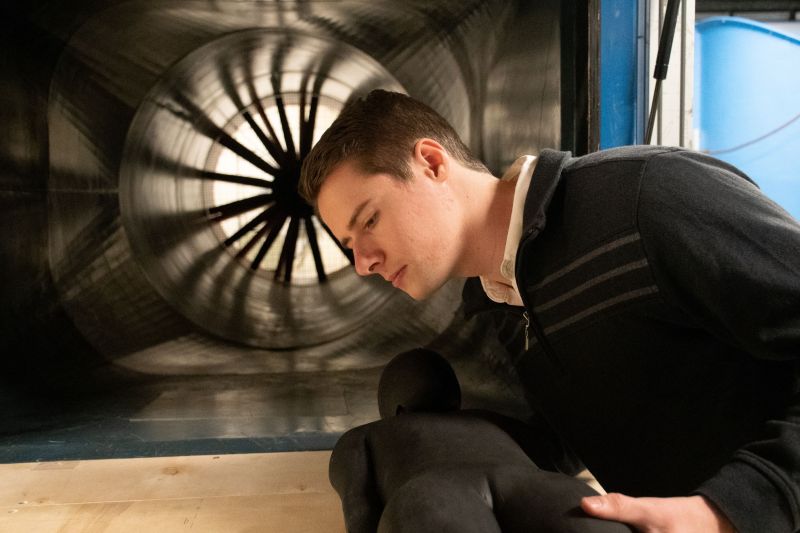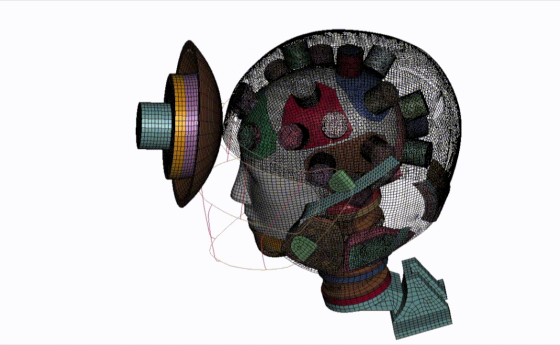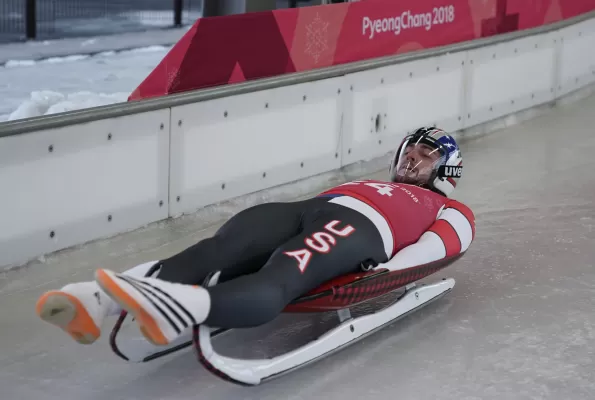
NSF grantees try to turn silver into gold
Clarkson University engineers developing faster sleds ahead of 2022 Winter Olympics
Luge was first competed at the Olympics in 1964 and requires athletes to barrel down an ice track on small sleds accelerating to speeds of nearly 90 mph. Traditionally, lugers design and build their own sleds, often through trial and error.
Now the U.S. National Science Foundation is supporting Clarkson University engineering professors in their work to test new scientific approaches that could improve the performance of U.S. luge sleds. At the same time, they are training the next generation of STEM students in unsteady aerodynamic design. After winning the first men's singles medal -- a silver -- in 2018, U.S. sights are set on winning gold this February in Beijing.
A new approach to an age-old effort
Engineering improvements in sled design are difficult to make because of complicated aerodynamics, complex sled geometry (or shape) and unsteady, turbulent air flow around the sled. In the past decade, USA Luge has partnered with some companies and with Clarkson Mechanical and Aeronautical Engineering Professors Doug Bohl and Brian Helenbrook to move from "trial-and-error" design to cutting-edge aerodynamic design. The new approach uses advanced computational and experimental methods to optimize sled geometries to develop faster, more aerodynamic sleds.
Bohl was introduced to luge when his son participated in camps with Olympic coaches, and he started working with USA Luge around 2010. Bohl and Helenbrook helped develop a fiberglass shell, creating models using computer-aided design, or CAD, and machining a mold -- the first time it was done for the sport, Bohl said. They helped design the sled Chris Mazdzer used to win the silver medal, finishing only 0.026 seconds out of first.
That partnership ended, but a series of conversations led to the partnership among USA Luge, Aeroworks LLC and Clarkson University to explore the use of computational fluid dynamics to improve sled design -- and shave off those extra 1/1000 of a second that can be the difference between silver and gold.
Bohl and Helenbrook proposed a research project for testing a design method -- with luge as the use case, and now NSF's Engineering Directorate is helping advance this research. "This is just a unique project in that STEM students will develop skills in computational and experimental aerodynamic design and then potentially see their designs come to life in the Olympic luge competition," said Ronald Joslin, NSF Fluid Dynamics program director.
Computation, 3D printing and wind tunnel testing
To develop their new luge shapes, Bohl and Helenbrook used a computational method called adjoint-based optimization, which helps find optimal shapes for vehicle design to improve performance, such as improving lift or reducing drag. Historically, this method has been used on simple streamlined shapes such as airplane wings. Recently it has been applied to more complex shapes such as automobiles.
"The flow is not simple around a car, and luge is the same way," Bohl said. "It's an ugly airflow. It's aerodynamic -- but complicated. The places where you can make change are limited, so it becomes a good testbed. The scientific question is, 'Can you use these computation methods that combine computational fluid dynamics and design to meet your objectives on a complicated structure with a complicated flow?'"
To understand the effectiveness of adjoint design method, the research team built scale models of Mazdzer and the sled and tested them in wind tunnels at the Aberdeen Proving Ground, a U.S. Army facility in Maryland, measuring air flow and performance and making sled modifications to improve the aerodynamics. Working with 3D printing company Stratasys, the researchers were able design and print sleds more quickly, reducing the amount of time it takes to test new designs. Mazdzer will compete at the Olympics using a sled developed by the research team.
"None of this is to say that what they are on this year [is] completely optimized, but it's better," Bohl said. "It's a super steep learning curve. You just can't draw one of these things. When we started this originally, we didn't know how to draw a sled in CAD, because it had no edges. There was nothing that makes it easy to engineer. … It's harder than you could have imagined. We're timing the sport to a 1/1000th of a second, so when setting the sleds up, we're talking about millimeters of geometry changes."
Future applications and STEM inspiration
The research will have applications beyond luge, said Bohl and Joslin. The new tools and the skills developed by the students can impact other industries to optimize the design of vehicles like cars, trucks, ships and advanced air vehicles to improve performance, reduce fuel consumption and reduce emissions to the environment.
"This is a smart design process," Bohl said. "Rather than just a wing, you look at something more complicated, like the whole airplane. You can apply this work to complicated structures to meet your objective. The luge is complicated geometry, and it's fun. We are doing work that is scientifically interesting and technologically interesting but is also fun. You can make progress and advance the art and science on something that's fun if you scope it right."
The research is also teaching students new techniques for vehicle design. "These drag reduction techniques are really tools and experiments for these STEM graduate students. These skill sets can be used to design almost any kind of unsteady vehicle. The less drag you have, either the faster you go or you can improve the endurance of an object's travel," said Joslin. "If they win [at the Olympics], it's kind of cool, but equally or more important, the engineering students at Clarkson learned advanced design methods, partnered with other organizations in team design, and potentially will observe the real-world impact of their work on an Olympic sport."
Take a luge run with Chriz Mazdzer



